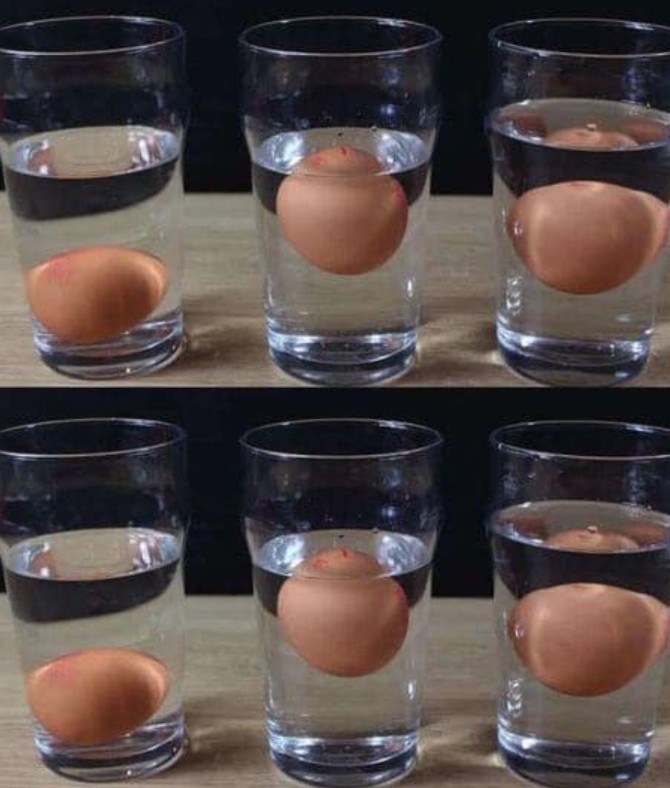
Okay Eggs
3️⃣ Watch What Happens
Lies flat on the bottom
Fresh!
Less than a week old — perfect for poaching or soufflés
✅
Stands upright on the bottom
Still good
❌
Floats to the top
Toss it.
Too much air has built up — it’s past its prime and could be spoiled
🔬 Why the Float Test Works (The Science Bit)
Inside every egg is a small air pocket between the two membranes at the blunt end.
As an egg ages:
Moisture evaporates through tiny pores in the shell
The air pocket gets bigger
This makes the egg more buoyant
So when it floats?
That air cell has grown so large, it lifts the whole egg — like a tiny life raft made of bad decisions.
🪦 Floating doesn’t always mean it’s rotten…
But it means it’s old, dried out, and best avoided.
🧴 Other Ways to Check Egg Freshness
If you’re already cooking, here are two more methods:
👀 Crack It Open
Fresh egg: Yolk stands high, firm; white is thick and clings close
Older egg: Yolk flattens easily; white spreads out thin and watery
🔦 The Flashlight Test (Candling)
Shine a bright flashlight through the egg in a dark room
Fresh eggs look dense; older ones show a larger air pocket and possible movement inside
(Used by farmers and hatcheries — fun for egg geeks!)
🗓️ How Long Do Eggs Last?
In the fridge
4–5 weeks from purchase
(even past the « sell-by » date!)
At room temperature
1–2 weeks max
(not recommended in most countries)
Hard-boiled
1 week in the shell
(peeled ones last 2 days)
✅ Pro Tip: Store eggs in the original carton — it protects them and keeps them from absorbing fridge odors.